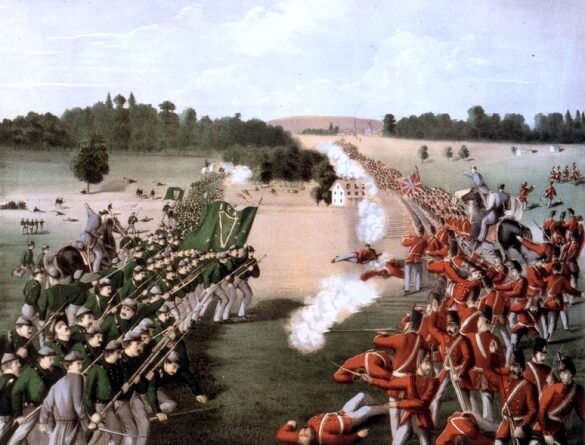The Reasons Behind the Irish Fenians’ Attempt to ‘Capture Canada’ in 1866
Commentary
It was 1866 and in the aftermath of the American Civil War, thousands of Irish immigrants who had fought in both the Union and Confederate armies were of a mind to invade Canada. They were followers of the Fenian Brotherhood, a group formed in the United States in 1858 to advocate for an independent Irish republic free from British rule.
Said one agitator: “The Lion of England’s whelp should be lashed – Canada be invaded.” To do so, they raised money, stockpiled weapons, and trained troops along the border with Canada. They did this with the American government turning a blind eye to their activities—Britain had in many ways supported the Southern cause during the Civil War and was not in favour among federal politicians. Moreover, President Andrew Johnson had met openly with Fenian leaders, which encouraged some to think that they had Washington’s support in a move against Canada.
To make the situation even more tense, the Fenians sought to raise support from Irish Catholic immigrants in Canada, holding meetings, soliciting donations, and asserting that there were masses of émigrés willing to rise up to free their mother country.
A Fenian soldier’s song at the time went:
We are the Fenian Brotherhood, skilled in the arts of war,
And we’re going to fight for Ireland, the land we adore,
Many battles we have won, along with the boys in blue,
And we’ll go and capture Canada, for we’ve nothing else to do.
In April 1866, a force of 700 Fenians based in Maine gathered to launch an attack on Campobello Island in New Brunswick. It turned into a fiasco, thwarted by sailors of the Royal Navy sent from Halifax, causing embarrassment and considerable expense to its organizers.
Nothing daunted, an even larger contingent of Fenians, well-armed veterans of combat, assembled in May in upstate New York. In the early morning hours of June 1, a force of about 1,200 men began crossing the Niagara River and landing on Canadian territory near Fort Erie, Ontario. They tried to rouse the local inhabitants to support their invasion, vowing that they had “taken up the sword to strike down the oppressor’s rod and deliver Ireland from the tyrant” and meant no harm otherwise. They commandeered food, supplies, and horses from the disgruntled townsfolk, offering only worthless Fenian bonds in return.
Sent to oppose the invaders were two detachments of the Canadian Militia, the Queen’s Own Rifles, drawn from volunteers in Toronto, and the 13th Battalion. On June 2, they met the Fenians along a limestone ridge and began to exchange fire. The Canadian force seemed to be doing well for a while until a confused series of commands caused disorder in their ranks. Seizing the moment, Fenian Gen. John O’Neil ordered a bayonet charge which drove the inexperienced militia from the field. Fearing the arrival of British regular troops, the Fenians turned back to Fort Erie. There they fought another skirmish before deciding to retreat to the safety of the American shore.
In the British North American colonies, the invasion also produced waves of patriotism and a determination to resist the next threat even more strongly. An Irish Protestant resident of Sherbrooke declared: “We are prepared here – almost everyone has his rifle and no quarter will be given any more than to wolves or rats. If they come here they will find no soft Southern people to deal with – but stern hardy sons of the forest and they will feel the hug of the northern bear.”
More importantly, the lesson that Canadian politicians learned was that a union of the various British colonies was essential. The Fenian menace had strengthened the nascent calls for confederation and within 13 months, Ontario, Quebec, New Brunswick, and Nova Scotia had united in a new nation, the Dominion of Canada.
Views expressed in this article are opinions of the author and do not necessarily reflect the views of The Epoch Times.





